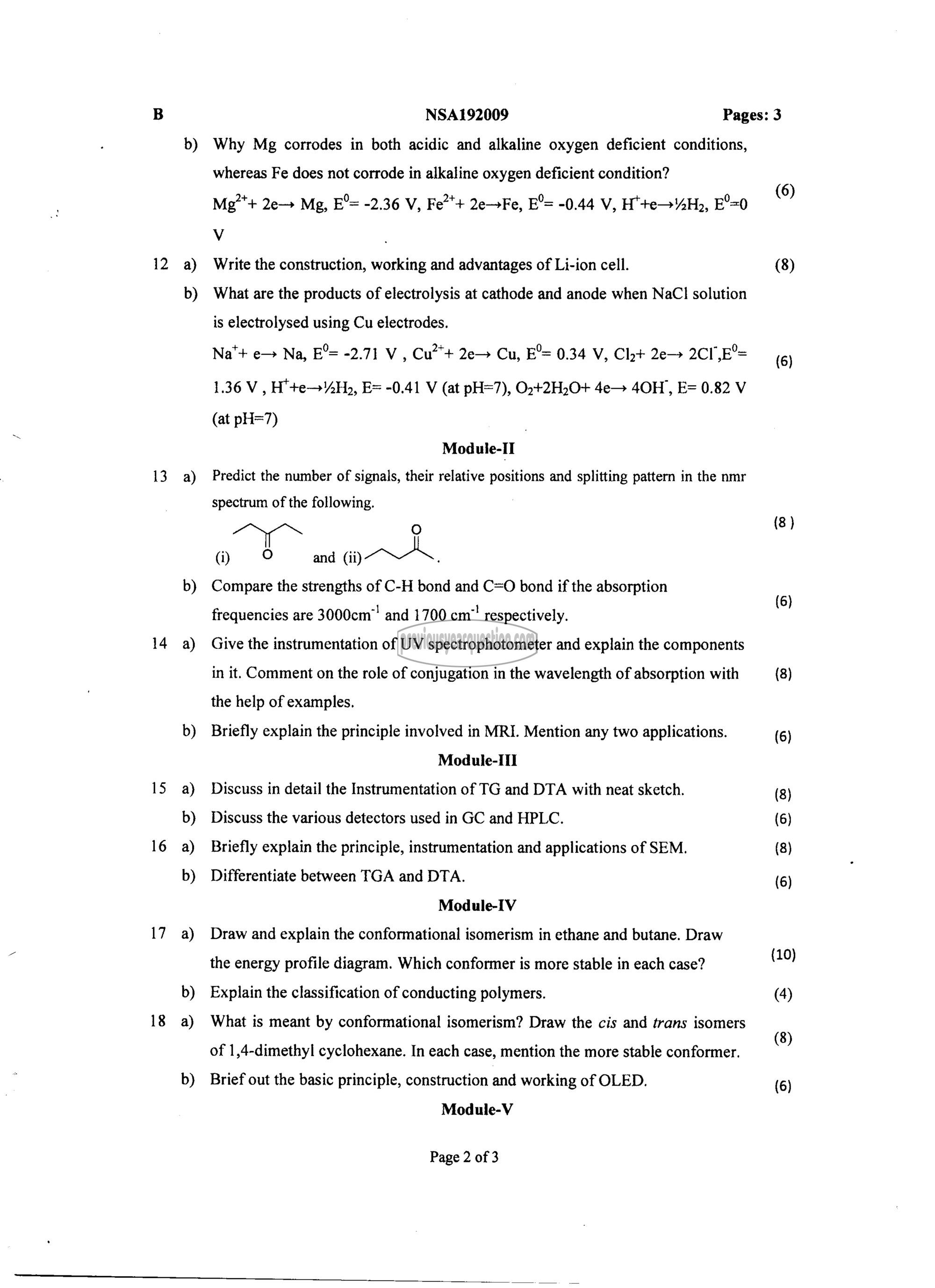APJ ABDUL KALAM TECHNOLOGICAL UNIVERSITY Previous Years Question Paper & Answer
Semester : SEMESTER 1
Subject : ENGINEERING CHEMISTRY
Year : 2019
Term : DECEMBER
Branch : MECHANICAL ENGINEERING
Scheme : 2019 Full Time
Course Code : CYT 100
Page:2
12
13
15
16
17
b)
a)
b)
a)
b)
a)
a)
b)
a)
b)
NSA192009 Pages: 3
Why Mg corrodes in both acidic and alkaline oxygen deficient conditions,
whereas Fe does not corrode in alkaline oxygen deficient condition?
Mg**+ سو Mg, E°= -2.36 V, {++ 20-56, E°= -0.44 V, 1-೨ ಇಟು, E°=0
۷
Write the construction, working and advantages of Li-ion cell.
What are the products of electrolysis at cathode and anode when NaC! solution
is electrolysed using Cu electrodes.
Na‘+ جو Na, E°= -2.71 ५ , ("+ 20 Cu, E°= 0.34 ۷, جر[ 20- ட்டை
1.36%, நண E= -0.41 V (at pH=7), O2+2H20+ 40 40H, E= 0.82 V
(at pH=7)
Module-II
Predict the number of signals, their relative positions and splitting pattern in the nmr
spectrum of the following.
റ
ல் and ~ ~^.
Compare the strengths of C-H bond and C=O bond if the absorption
frequencies are 3000007 and 1700 دہ respectively.
Give the instrumentation of UV spectrophotometer and explain the components
in it. Comment on the role of conjugation in the wavelength of absorption with
the help of examples.
Briefly explain the principle involved in MRI. Mention any two applications.
7110016-11
Discuss in detail the Instrumentation of TG and DTA with neat sketch.
Discuss the various detectors used in GC and HPLC.
Briefly explain the principle, instrumentation and applications of SEM.
Differentiate between TGA and DTA.
Module-IV
Draw and explain the conformational isomerism in ethane and butane. Draw
the energy profile diagram. Which conformer is more stable in each case?
Explain the classification of conducting polymers.
What is meant by conformational isomerism? Draw the cis and trans isomers
of 1,4-dimethyl cyclohexane. In each case, mention the more stable conformer.
Brief out the basic principle, construction and working of OLED.
Module-V
Page 2 of 3
(6)
(8)
(6)
(8)
(6)
(8)
(6)
(8)
(6)
(8)
(6)
(20)
(4)
(8)
(6)
